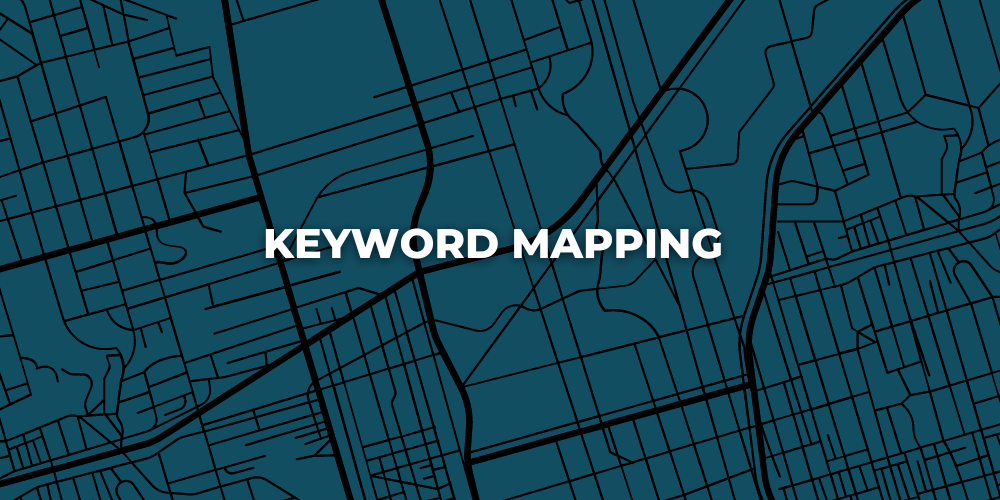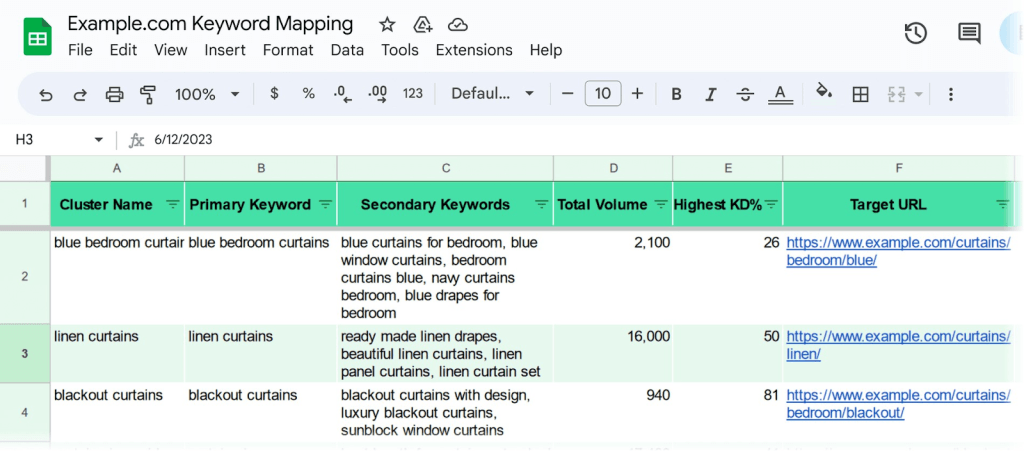
Creating an SEO keyword map is essential to ensuring the success of your website’s visibility. If you understand the importance of choosing the right keywords and page optimization but don’t have a keyword map to guide your way, then you’re likely to get lost in a sea of other sites targeting the same keywords.
Your keyword map will direct the flow of your SEO strategy and create an opportunity for cohesive and effective internal linking strategies.
It would be easier to manage an optimization strategy with a solid SEO keyword map to give you direction and provide opportunities for improvement. We created this step-by-step guide to help you discover how to create a solid keyword map that will help your website rank high in SERPS.
What Is Keyword Mapping?
Keyword mapping is the process of assigning keywords to each page on your website based on keyword research and search intent. Through this process, you’ll assign each individual page a specific keyword that answers a specific query.
But that’s not all. Along with your seed keyword, you’ll also use keyword mapping to assign clusters or groups of keywords to certain pages. These are usually variations of your seed keyword (plural forms, different tenses, synonyms, etc.) and related terms or phrases.
Mapping your keywords ensures you’re using words and phrases that target specific search queries without falling into keyword cannibalization or duplicating content from your other pages.
Google and other search engines rank pages based on the keywords used in their URL, meta tags, and on the page itself. If you have multiple pages using the same keyword, then Google won’t know which to rank highest for a query. Using a keyword map helps you eliminate this risk.
Why Keyword Mapping Is Vital for Success
The benefits of keyword mapping are numerous. The first benefit is it helps you develop a comprehensive and effective SEO keyword strategy, which is necessary to ensure your pages rank high in search results rather than get buried by the competition.
A keyword map will help you effectively organize your content, making it easier for Google to understand the intent of each page of your site and for readers to discover what they need.
Having effective organization also leads to a better internal linking strategy, which helps customers stay on your site rather than entering a related search query into a search engine when new questions come up and potentially clicking on another site.
Along with those benefits, mapping out your keyword strategy will help you keep track of what is and isn’t working, making it easier to adjust your strategy when necessary.
Step-by-Step Keyword Mapping Guide
Creating a keyword map may seem challenging, but it doesn’t have to be complicated. As long as you follow our steps, you’ll have an effective keyword map in no time!
Step 1: Identify Your Keywords
The first step is to identify your target keywords. You should have a main keyword you aim to rank for on each site page. The main keyword, sometimes called the seed keyword, should be the answer to a specific query.
There are plenty of simple online tools you can use to help identify keywords. One of the most popular options is Google Search Console. This tool will help you identify trending keywords and see whether the trend is going up or down.
You can use your main keyword to find other relevant keywords and phrases to map to your site. Tools like Google Search Console also allow you to research the keywords your competition may be using. This can give you valuable insight into their SEO strategy and help direct your strategy.
Step 2: Develop Groups of Keywords
Once you’ve identified your seed keyword and have compiled a list of adjacent words and phrases, group these together based on which questions they answer. Organize your keywords and phrases into groups based on the search intent behind each.
By doing this, you will create groups of words and phrases that all answer the same question.
This will give you groups of keywords and phrases to use on each page based on what question each page answers. The keywords will correlate directly to the intent of your pages and help you create a logical flow for the structure of your website.
Doing this will give search engine crawlers a logical path to follow when indexing the pages on your site and make it easier for visitors to find you. Make sure to include variations and similar phrases in your groups to cover all your bases.
Step 3: Create A Keyword Map
Now it’s time for the exciting part: building your keyword map!
At this point, you should have a clear intention for each page on your website and groups of keywords you wish to target for each page.
Many people use a spreadsheet to create their keyword map. Each row should be a specific page on your website, and each column should be an essential element for page optimization. Along with your keywords, some elements you’ll want to include in your map are URLs, meta tags, existing titles, etc.
You may also find it helpful to include notes about updates, images, word count, or other on-page things that affect your SEO. When you’ve completed your map, thoroughly double-check it to ensure each page is unique from the others.
This stage is crucial because it will help you avoid common errors like duplicating content and keyword cannibalization. Use your map to ensure each page has its own dedicated group of keywords that isn’t too similar to any other page.
Step 4: Use Your Map to Check Current Pages
Once your map is complete, use it to check the SEO of your current pages. Now it should be easier to spot common mistakes hurting your page optimization.
- Some common things you’ll want to look out for:
- Duplicated content
- Pages with the same keywords or phrases
- Missed opportunities for internal linking
- Meta tags that could be updated or improved
- Irrelevant or missing content
- Missed opportunities for images tagged with appropriate keywords
Step 5: Continue Improving Your Map
Creating a keyword map isn’t a one-and-done job. Your map should be continually updated based on your website’s content, current trends, and new keyword opportunities. There is always room for improvement. So it’s helpful to go back and update existing content to increase your chance of ranking.
Use the map as your site grows to ensure you aren’t duplicating your content and to find opportunities for new content to explore.
Remember to check keyword research tools like Google Search Console to check the trends of your keywords. Or, use it to find areas where you can improve or expand on different topics.


